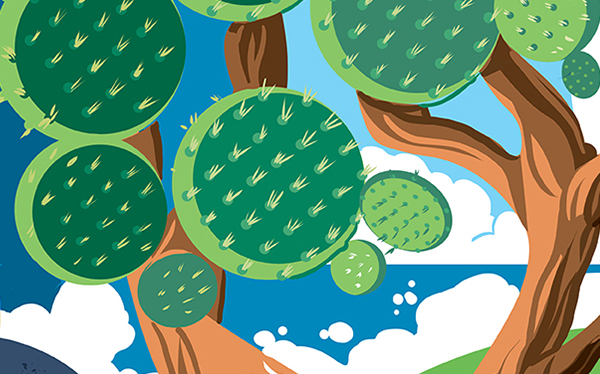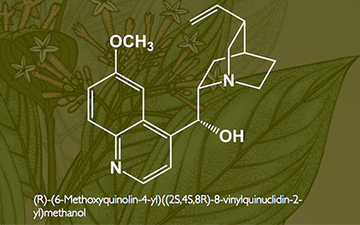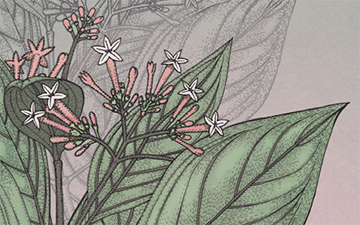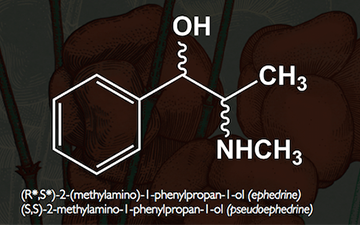For best results print the cards using the Firefox Browser
Cards
(QUICK LINKS: Decks | plants | mammals | birds | | reptiles | fish | cephalopoda | insects | microbe | events
( scientist | project | modifier | technique |)

Galapagos Prickly Pear
Opuntia echios


Sorry, there is no photo available. If you have one, please submit
here
.
1 POINTS
Fact: This prickly pear is a favourite meal for the Galápagos tortoises. It’s presence is also a selective pressure and has resulted in changes to the tortoise’s shell.
warm, hot
Graphic by Robert Ballwww.robertmball.com/
Opuntia echios is a species of plant in the Cactaceae family. It is endemic to theGalápagos Islands (Ecuador) and is commonly known as the Galápagos prickly pear, but there are five other species of prickly pears that also are endemic to the archipelago (O. galapageia, O. helleri, O. insularis, O. megasperma and O. saxicola). There […] read more

Lathyrus nervosus
Lathyrus nervosus


Sorry, there is no photo available. If you have one, please submit
here
.
3 POINTS
Fact: During the Beagle voyage, this pea plant specimen was collected in Bahia Blanca, near Buenos Aires on October 2nd, 1832.
cool, warm
Graphic by Simon Gurrwww.gurrillustration.com/
Lathyrus /ˈlæθɨrəs/[1] is a genus of flowering plant species known as sweet peas and vetchlings. Lathyrus is in thelegume family, Fabaceae, and contains approximately 160 species. They are native to temperate areas, with a breakdown of 52 species in Europe, 30 species in North America, 78 in Asia, 24 in tropical East Africa, and 24 […] read more

QUININE (MW: 324.4)
.
Sorry, there is no photo available. If you have one, please submit
here
.
C20H24N2O2
SOURCE: Cinchona trees.
USE: antipyretic, antimalarial.
PLAY: Place under source card for + 5 points.
Graphic by Stephen McNeilpeople.ok.ubc.ca/wsmcneil/
Quinine (US /ˈkwaɪnaɪn/, /kwɪˈniːn/ or UK /ˈkwɪniːn/ kwin-een) is a white crystalline alkaloid having antipyretic (fever-reducing), antimalarial, analgesic (painkilling), and anti-inflammatoryproperties and a bitter taste. It is a stereoisomer of quinidine, which, unlike quinine, is an antiarrhythmic. Quinine contains two major fused-ring systems: the aromatic quinoline and thebicyclic quinuclidine. Quinine occurs naturally in the bark […] read more

Cinchona tree
Cinchona genus


Sorry, there is no photo available. If you have one, please submit
here
.
2 POINTS
Fact: The drug quinine is isolated from cinchona.
warm, hot
Graphic by Julia K. Kreutzjuliakreutz.com/
Cinchona, common name quina, is a genus of about 25 recognized species in the family Rubiaceae, native to the tropical Andes forests of western South America.[2] A few species are reportedly naturalized in Central America, Jamaica, French Polynesia, Sulawesi, Saint Helena in the South Atlantic, and São Tome & Principe off the coast of tropical […] read more

(PSEUDO*)EPHEDRINE (MW: 165.23)
.
Sorry, there is no photo available. If you have one, please submit
here
.
C10H15NO
SOURCE: Ma Huang. *Pseudoephedrine is a diastereomer of ephedrine
USE: stimulant, bronchodilator, appetite suppressant.
PLAY: Place under source card for + 5 points.
Graphic by Stephen McNeilpeople.ok.ubc.ca/wsmcneil/
Ephedrine (i/ɨˈfɛdrɪn/ or /ˈɛfɨdriːn/; not to be confused with ephedrone) is a sympathomimeticamine and substituted amphetamine commonly used as a stimulant, concentration aid,decongestant, appetite suppressant, and to treat hypotension associated with anaesthesia. Ephedrine is similar in molecular structure to the well-known drugs phenylpropanolamine andmethamphetamine, as well as to the important neurotransmitter epinephrine (adrenaline). Chemically, it […] read more

Ma Huang
Ephedra sinica


Sorry, there is no photo available. If you have one, please submit
here
.
2 POINTS
Fact: The drugs ephedrine and pseudoephedrine are found in the Ma Huang plant.
cool, warm
Graphic by Julia K. Kreutzjuliakreutz.com/
Ephedra sinica (also known as Chinese ephedra or Ma Huang) is a plant species native to Mongolia,Russia (Buryatiya, Chita, Primorye), and northeastern China (Gansu, Hebei, Heilongjiang, Jilin, Liaoning,Nei Mongol, Ningxia, Shaanxi, Shanxi).[1][2] Ephedra is a medicinal preparation from the plant Ephedra sinica.[1] Known in Chinese as ma huang (麻黃; pinyin: má huáng, which literally translates into English […] read more